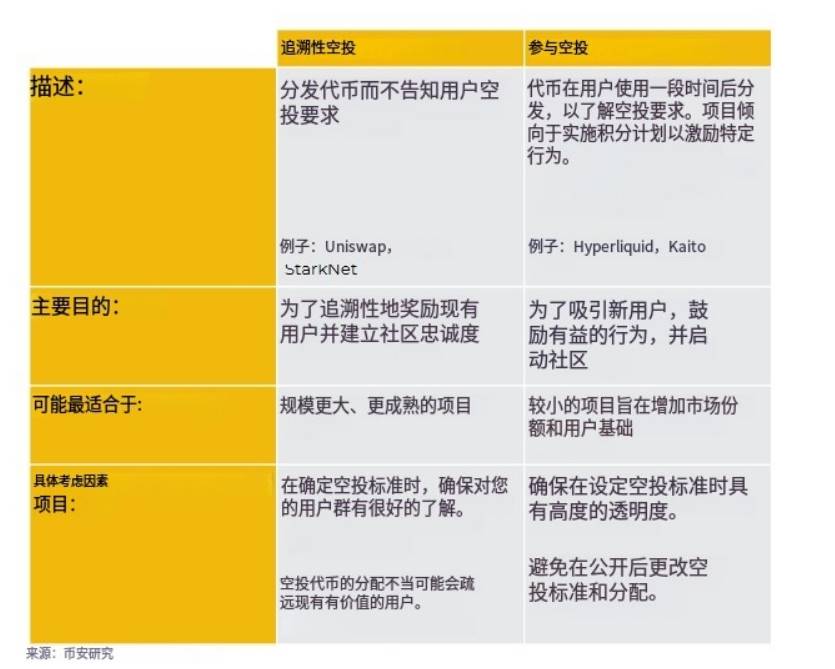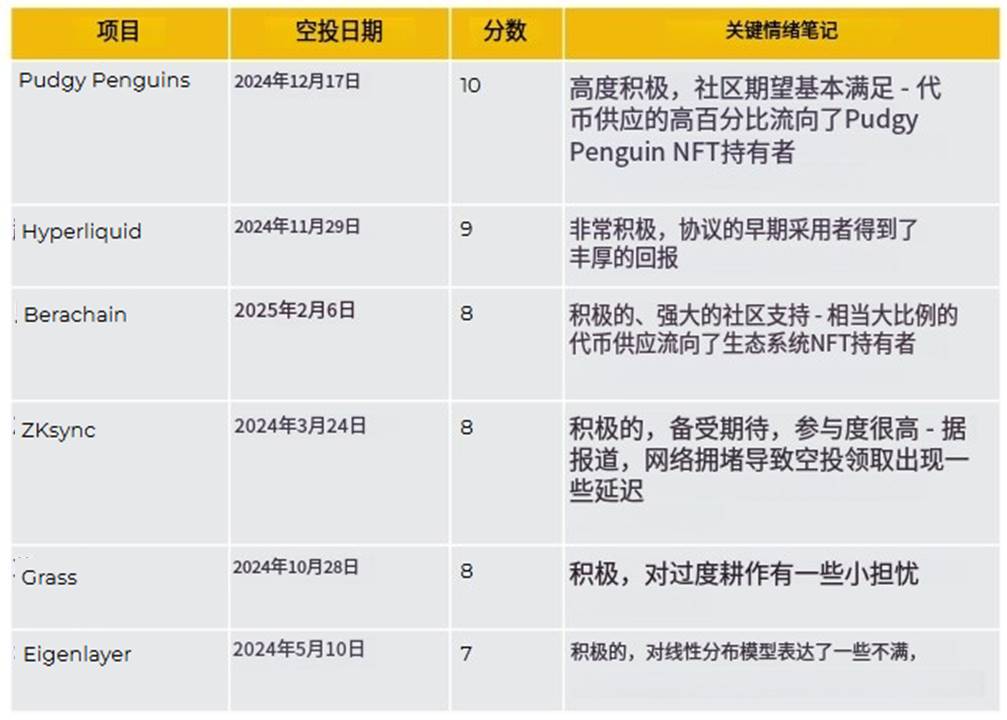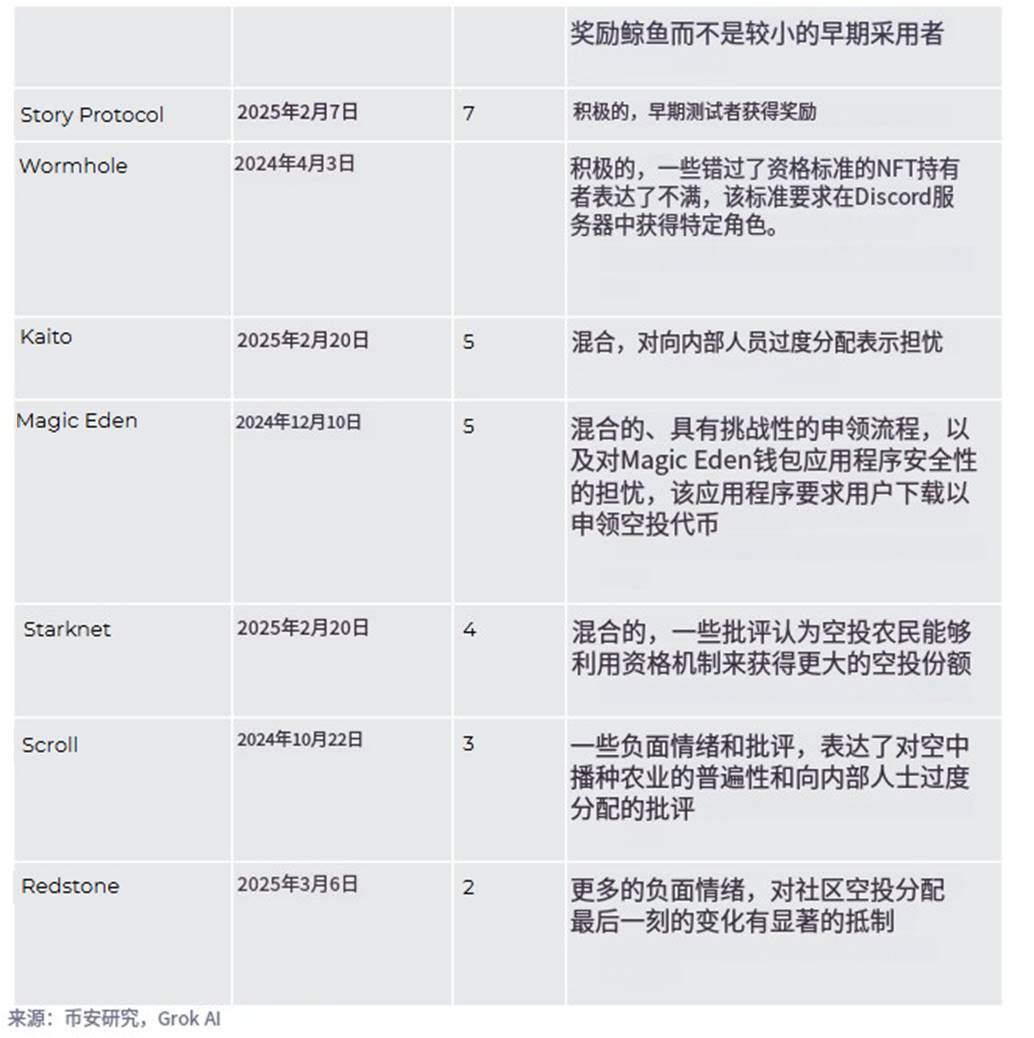Binance Research Institute Airdrop Report: What do you need to do for successful airdrops?

Reprinted from panewslab
03/25/2025·1MAuthor: Shenchao TechFlow
If there are new people in the industry, then airdrop is likely to be his first stop.
From pure fleece to complex game between project parties and users, airdrops have gradually made everyone love and hate.
For users, love is because successful airdrops bring huge rewards, but hates complex rules, cumbersome tasks and even opaque distribution mechanisms;
For the project, love is airdrops can still bring short-term traffic and attention, but the decline in volume behavior and the decline in the community's trust also makes them feel a headache.
People will change.
After multiple rounds of bull and bear alternation, users in the crypto market still have expectations for "free lunch", but their behavior has also become more rational. The project party gradually realized that simple airdrops could no longer meet the needs of community construction, and instead tried more complex and transparent distribution mechanisms.
Hyperliquid’s airdrop, for example, was highly praised for rewarding early users, while Redstone’s airdrops sparked strong community opposition for temporary changes in allocation ratios.
It’s already 2025, can airdrops continue to play their role?
Recently, Binance Research Institute released a report called "Where Are Our Airdrops Going?", which provides us with an in-depth perspective. By analyzing the current situation, problems and direction of improvement of airdrops, it may be possible to find better solutions for project parties and users.
Shenchao TechFlow has sorted out and summarized the core content of the report, and the core views are as follows.
Key Points
-
Although there are still many shortcomings in the airdrop model, its position in the industry cannot be ignored.
-
Two popular airdrop categories:
-
Retroactive Airdrops: Retroactive Airdrops: Mainly rewards existing users, distributing tokens based on their historical behavior, aiming to enhance community loyalty.
-
Participatory Airdrops: Attract new users and increase project exposure by notifying users in advance and setting task incentives. It is more suitable for early stage projects, used to seize market share and build initial user base.
-
Points to improve:
-
Clear allocation rules and standards help reduce user dissatisfaction and misunderstandings.
-
Project parties need to listen more to the community.
-
Avoid excessive tilting resources towards internal teams or large players to avoid damaging the interests of ordinary users.
-
The introduction of on-chain monitoring tools and "human identity verification" technology is expected to reduce the number of airdrops and make airdrops more fair and efficient.
Through these core points, the report provides us with a clear framework to help us understand the current situation of airdrops and the possible directions in the future.
From simple distribution to complex game
Judging from the first airdrop activity in 2014, airdrops have a history of 10 years in the industry.
The first airdrop worth noting was Auroracoin in 2014, with the goal of promoting the national cryptocurrency to Icelandic residents. At that time, users only had to enter their permanent resident ID card on the Auroracoin official website to receive the tokens.
Compared to recent, Hyperliquid's HYPE airdrop (November 2024) is probably one of the largest and best-rated airdrops to date, further strengthening the airdrop's position as a powerful user engagement tool. At its peak valuation of over $10 billion, HYPE token airdrops surpassed Uniswap to become the largest airdrop at peak price.
However, in order to cope with the increase in witch attacks, the project party has also increased the complexity of obtaining empty investment spaces.
Unlike early airdrops, today’s airdrops usually require users to complete multiple tasks, such as using testnets, participating in social media activities, participating in governance, downloading mobile applications, and transferring funds across chains. These necessary operations also often directly bring benefits to the project, such as increasing on-chain revenue/activity or increasing social media exposure.
The current airdrop can be divided into the following two parts.
Type 1: Retroactive Airdrops
Some earlier airdrops, such as those from Auroracoin, Uniswap and StarkNet, did not disclose any relevant information to the public before the airdrop is allocated; the purpose is to reward existing community users and increase their loyalty.
Features:
- More user-centered
- Usually executed by agreements that already have a large user base and market share.
- There is no need to start the initial user group through airdrops.
Applicable scenarios: A mature protocol used to give back to existing users and consolidate community relations.
Type 2: Participatory Airdrops
Incentive users to participate in specific activities by informing users of upcoming token generation events.
Features:
- More project-centric.
- It is mainly used to attract new users and help the project gain initial market share.
- User behavior is often motivated through points plans and other forms.
Typical cases: Redstone, Kaito and Hyperliquid.
Applicable scenarios:
Emerging projects need to remain competitive through airdrop and competition agreements (or may also use token incentives).

Sentiment analysis of coin airdrops in the recent era
To better understand the recent developments in airdrops, the report also uses Grok AI to briefly analyze and rate some significant airdrops over the past year.
Source of sentiment analysis: Posts on X, including but not limited to community feedback, including the ratio of positive to negative comments, the level of interaction, and specific criticism or praise content.
Grok also reviewed official announcements in online articles, tokenomics models and short investment grid standards. Emotions are classified as positive, negative, or mixed according to the dominance of the reaction.
The following is the original table in the report. We used AI to translate it. Some texts may be ambiguity; but the score values in the original table reflect different views of the community on different airdrops. The higher the score, the more positive it is.


Experiences and lessons learned from past airdrops
Reduce the distribution ratio at the last minute
Some crypto projects initially promised to allocate a percentage of tokens to the community, but later reduced that percentage, reallocating the tokens to insiders or project vaults. Recently, Redstone airdrops have sparked strong community opposition because the team cuts the community allocation from 9.5% to 5% before the token distribution date. Many community members believe this behavior is unfair.
Lessons learned
- Clarify the token allocation ratio in advance: clearly convey the token allocation plan before the token generation event (TGE).
- Avoid last minute changes: Try not to make temporary adjustments to the allocation.
- Consult with stakeholders if necessary: Avoid making unilateral decisions if it is indeed necessary to change the allocation ratio. Discussions should be conducted with key stakeholders (e.g. investors, communities, exchanges) and sufficient communication should be ensured.
Opacity of eligibility criteria vs. mismatch expectations
Some projects convey unclear standards in terms of empty investment space, resulting in uneven reward distribution and failing to accurately reflect the actual activities of users. Scroll's airdrop in October 2024 (distributed 7% of its total SCR token supply, or 70 million tokens) has been criticized for its arbitrary snapshot mechanism and hidden rules.
Lessons learned
- Clearly communicate allocation rules: Ensure that the rules are transparent and avoid having users need to guess too much, which often leads to expectations that do not match the actual situation.
- Preventing witch attacks: Consider using on-chain monitoring tools or "Proof-of-Humanity" tools to reduce abuse.
**The distribution of excessive proportion of internal personnel and
KOLs**
Many projects allocate a larger percentage of tokens to teams, investors and venture capital institutions (VCs), leaving a smaller percentage to the community. For example, KAITO distributed 43.3% of tokens to teams and investors in its February 2025 airdrop and only 10% to the community, which sparked public debate on the X platform.
Some projects will allocate a large number of tokens to Internet celebrities (Influencers), and these Internet celebrities may choose to sell out immediately, thereby diluting the value of the tokens and harming the interests of real users. KAITO also reportedly caused controversy over allocating large amounts of tokens to internet celebrities who sold tokens shortly after the token generation event (TGE), affecting the token price and undermining the trust of the community.
Lessons learned
- The allocation ratio needs to be cautious: learn from the token allocation results of projects of similar scale or nature, and pay attention to the market's response to the allocation plan.
- Implementing the vesting period and lock-up mechanism: Implementing the vesting period and token lock-up for internal personnel and internet celebrities can reduce the initial selling pressure after TGE and better align their interests with the long-term goals of the project.
Technical barriers in the collection process
Complex or vulnerable collection processes can hinder users from collecting tokens, actually reduce payment amounts, and greatly undermine the intended purpose of the airdrop collection process.
For example, Magic Eden's airdrop in December 2024 attempted to promote its mobile wallet app through airdrops, but feedback on the X platform about vulnerabilities and unclear descriptions seems to have caused users' frustration rather than expectations.
Lessons learned
- Airdrop collection is an important first-time contact point for many potential users. Ensure the process is smooth and convenient to improve the possibility of user retention.
How to get better with airdrops?
Increase transparency
- Set clear goals: The project team needs to set clear goals for airdrops or token incentive plans and ensure that these goals are consistent with the project's long-term vision.
- Clear communication of goals: Through clear communication, align community behavior with project goals and vision to reduce dissatisfaction caused by inconsistent distribution of behavioral weights.
Enhance community participation
- Community is the core competitiveness of the project: technology and products can be iterated quickly, but community construction requires time and patience. The long-term success of the project depends on a solid and loyal community.
- The balance between transparency and participation: Transparency is the foundation, but transparency alone is not enough. Project teams need to engage the community more deeply in the development of the project through interaction and feedback mechanisms, thereby enhancing their sense of belonging and loyalty.
- Challenges brought by user mobility: The open crypto industry reduces user switching costs, so projects must retain users through stronger community stickiness and sense of belonging.
Increase monitoring mechanisms
Some projects (such as LayerZero) have partnered with on-chain analytics companies (such as Nansen) to identify and cancel the empty investment space of "witch attackers" by analyzing on-chain data.
As technology advances, on-chain monitoring tools will become more complex and widely used, making it easier for project teams to detect and eliminate bad behavior.
The Proof-of-Humanity tool is expected to help prevent airdrops from being abused in the future, while protecting users’ anonymity and privacy. Such tools may become a key means to solve the problem of "gamification" of airdrops.



 chaincatcher
chaincatcher